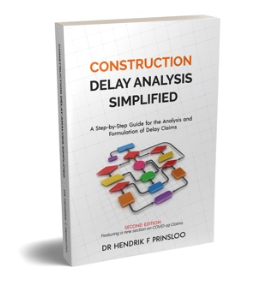Delay Analysis
As-Planned VS As Built: The Most Popular Delay Analysis Method Explained
FORMULATION | ANALYSIS | MANAGEMENT
I often teach the different delay analysis methods in a variety of settings. One of the questions I am asked the most often is: What is the most popular method of delay analysis? Several research studies have attempted to answer this question. A recent study ranked the common delay analysis methods as follows in terms of popularity:

| Delay Analysis Method | Usage Index | Rank |
|---|---|---|
| As-planned vs as-built | 65.7 | 1 |
| Impacted as-planned | 59.4 | 2 |
| Collapsed as-built | 54.8 | 3 |
| Time impact analysis | 48.2 | 4 |
| Net impact | 45.7 | 5 |
| Global | 45.5 | 6 |
| Window analysis | 40.2 | 7 |
| S-Curve | 33.8 | 8 |
In this article, the application of the As-Planned vs As-Built method is discussed looking into the steps to apply it, limitations, and when this method is suitable.

Dr Hendrik Prinsloo is an expert witness and specialist in the analysis construction delay claims
Description:
A comparison of critical path activities on the as-planned (baseline) programme with the same activities on the as-built programme to establish the net impact on the completion date.
Requirements to utilise this method:
- Baseline Programme with critical path
- As-built Programme with critical path
Time of application:
- Retrospectively
- The actual effect of the delay event has been experienced
- The analysis is done after the project completion or after the effect of the delay event ceased
Steps:
- Use the initial as-planned (baseline) programme and the as-built programme for the project.
- Compare each activity on the critical path of the as-planned (baseline) programme with the same activity on the as-built programme.
- Determine the net impact on the completion date by taking into account increased and decreased activity durations.
Limitations:
- It does not take into account the dynamic nature of the critical path.
- It does not determine the individual effect for each delay on the project completion date.
- As-built programmes are time-consuming to develop and are not always readily available.
- The utilisation of as-built information to develop the as-built programme can lead to manipulation.
- Considerable skill and experience are required to develop an accurate as-built programme.
- Accuracy will be impacted by deficiencies in the as-built programme.
Choose this method when:
- The compound effect of a number of delays needs to be established.
- Updated programmes and detailed progress updates are not available.
- Information on delay events is not readily available.

